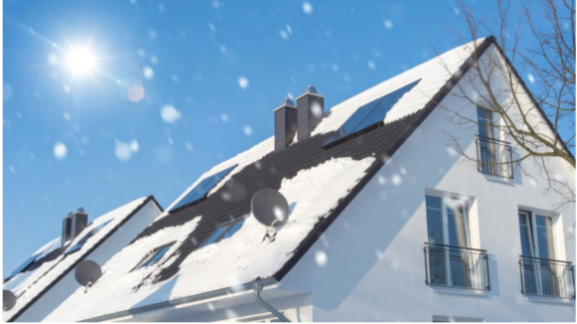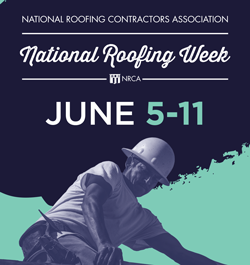What You Need to Know About Roofing in Winter

By Sara Smith, JobNimbus.
Roofing in winter requires a lot more planning, compromise and precautions than other seasons, but it’s still possible and can be advantageous to your business.
The trick is doing the job right and safely. So, before you take on the task, here are a few things you need to know about replacing a roof in winter:
Safety conditions
Even if you choose to work during winter, you’ll have to wait for the right temperature before installing a roof. It can be uncomfortable and even impossible to work in temperatures at or below freezing due to slippery footing and tool/shingle performance.
The ideal temperature to install roof shingles is between 40- and 85-degrees Fahrenheit. If you have clients in need of your service, you should first wait for temperatures to warm up. However, some roofs are 10- to 15-degrees warmer than it is outside due to the heat from inside the home.
Waiting will ensure your safety and that your working space is clear, but you could consider snow removal or re-icing a roof if it needs to be worked on as soon as possible. Just remember, shoveling and ice-breaking on a roof is dangerous work. It requires extra time, caution, equipment and training, so make sure you are already skilled in this area if you decide to do it.
Roofers should also wear roof-fall protection equipment while working on wintery roof surfaces. This includes safety nets, a PFA body harness, a hard hat and guardrail systems. Wearing additional gear that withstands wet and cold conditions, including winter appropriate jackets, work boots and gloves, will make your job less challenging and more secure.
Roofing materials
Certain roofing systems can be installed in winter without compromising quality, whereas others need to wait to be installed in warmer weather. Shingle adhesives can freeze and break in cold temperatures, which is why it’s important to distinguish what products will work and last in winter.
Low technology roofing materials like cedar shingles or metal tiles can easily be installed during the winter. These materials are not as susceptible to temperature fluctuations and hardly require any adhesive for proper installation. On the other hand, roofing systems that should not be installed in winter include modified bitumen, rubber roofs or any kind of peel-n-stick products.
Asphalt shingles can be installed in the winter but require extreme care and attention from roofers not to bend, crack or allow moisture underneath them. They need to be sealed properly and work best under warm weather conditions. However, if you plan to work with these shingles, make sure they are warm before installing them. You may even consider hand-sealing the shingles with an asphalt roofing cement or other reliable sealants to activate the bond in the cold weather.
Tool performance
Not only can your shingles be affected by the weather, but so can your tools. Tools like air compressors and nail guns that are used to lay shingles in place can lose their performance in the winter. Subzero temperatures can freeze the water in the tool’s airlines, preventing nails from being driven into the shingle deep enough. This will result in loose shingles and defeat the purpose of repairing the roof in the first place.
Alternatively, you can choose to hand-nail the shingles instead of using an automatic tool. This process will take longer, but it will guarantee reliable results and the job might be worth it.
Cold weather roofing offers its high-stake challenges, but for roofers who are dedicated to helping their customers, these obstacles won’t stop them from getting the job done. After all, roofing damages occur during any season, and homeowners will always have a need for roofers who are willing to work in the winter. Just keep in mind these ways for how you can do a proficient job while still being safe.
Be sure to check out more JobNimbus blogs for further insights on roofing! Request a demo to see how JobNimbus can help you with your roofing business.
Source: JobNimbus






















Comments
Leave a Reply
Have an account? Login to leave a comment!
Sign In